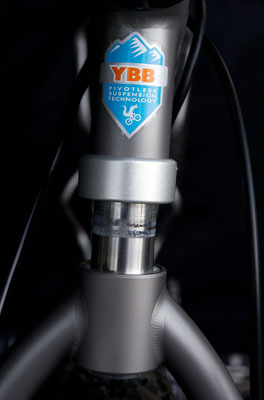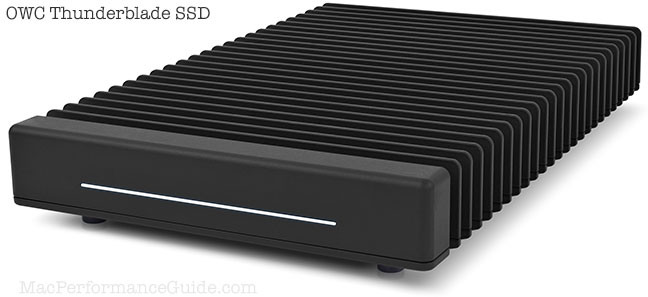2012 Moots MootoX YBB — Riding Notes

The Moots MootoX YBB has a distinctly Moots feel, yet offers a distinctly different ride than the MootoX RSL.
A/B on wheels/tires
I swapped wheels with the same tires (Easton EC90 XC with Schwalbe Furious Fred) from the MootoX RSL 29er to the MootoX YBB29er so that I’d have a strict A/B comparison in terms of wheels/tires.
Later, I also rode Racing Ralph tires on the YBB, also on the EC90 XC wheelset. Given the smooth-riding YBB rear-end, and the supple Fox shock, the Racing Ralph tires seem more appropriate for the MootoX YBB, though they actually do not seem to offer any better (and maybe worse) grip for climbing on some of the local terrain.
The Easton EC90 XC ballistic carbon fiber wheels are a superb match for the MootoX YBB, just as on the MootoX RSL.
Comfort
Here, the comparison is not A/B: the MootoX RSL has the RockShox SID XX World Cup, whereas the MootoX YBB has the 1-pound-heavier Fox '34 Float 29' fork. The SID XX is an ultralight racing shock (air), and does a lousy job of soaking up small bumps— half the time I can hardly tell whether it’s working or locked out! By comparison, the Fox '34 Float 29' soaks up small bumps with a smoothness that is startling compared to the SID XX. This results in a much smoother ride.
Comfort is notably improved on all terrain with the YBB (versus hardtail RSL).. This is due to both the MootoX YBB feature (rear end) and Fox '34 Float 29' fork, whose oil-based suspension offers far superior bump absorption to the RockShox SID XX World Cup installed on the MootoX RSL.
One can spend much more time in the saddle with the MootoX YBB than with the MootoX RSL, because that YBB mechanism works really well to take the harshness out of bumps. Thus. riding style veers from standing to sitting.
When carrying a small backpack (11-15 pounds), comfort is much better with the YBB; with the extra weight putting more pressure onto the seat, the mellow rear-end is something to appreciate on lumpy ground.
While the comfort is very nice with the YBB, the trail feel is softer, and the bike responsiveness is lessened. Well, what can one expect when comparing a race-oriented hardtail bike to a trail-oriented bike? Both bikes are at the top of their game, doing what they ought to be doing. One cannot say that ice cream is better than beer, it all depends on the goal. (beer float?). No doubt the MootoX YBB would perk up by switching to the RockShox SID XX, at the cost of less comfort in front.
For extended rides, pounding around on rough terrain, or rides with a backpack, the MootoX YBB is already my choice as the more civilized ride. For rides up to 2-3 hours on fast hardpack trails, the MootoX RSL really cannot be matched for its lighter weight and responsiveness.
Handling
So far, I am not able to track around a curved singletrack trail with the YBB as accurately as I can with the RSL; I go off-line sometimes. This might have to do with the slightly different head tube angle (71° instead of 71.25°), or more geometric trail, but given the greater rigidity of the Fox fork, it remains a puzzler. Bottom line is that I can track the RSL more accurately than with the YBB, even swapping the same wheels/tires. Perhaps with experience I’ll dial in the YBB better in this regard, or perhaps it’s a bike geometry issue that will remain (which is my leading theory at present).
On tight singletrack where rapid steering inputs are needed, the YBB does not feel as quick as the RSL. Some of this is likely due to the 1-pound heavier Fox shock, and 2 pounds heavier bike, and the YBB mechanism. The hardtail rear-end of the RSL gives more immediate feedback, and this might be incorporated into riding style. On the flip side, the YBB mechanism does seem to keep the rear end planted better on rougher terrain, allowing more speed.
Technical uphill
On challenging technical steep uphill terrain, the instant power transfer and superb trail feel of the RSL hardtail rear-end an advantage over the softtail YBB; the slight power loss from the YBB mechanism is a small but significant factor in cleaning some uphill grades, rounding off instantaneous power bursts that are just barely enough to clear some obstacles. We are talking really difficult terrain here, with fist-sized to head-sized rocks on loose gravel and some sand, on 7° or steeper slopes (for example), stuff that will send one’s well-conditioned heart rate to 90% of max.
The YBB mechanism translates into a muted trail feel that loses the subtleties necessary for fine-tuned rider feedback and response, bearing in mind that this applies to all dual suspension bikes, and less so for the YBB than conventional dual suspension.
The RSL hardtail “bounce” lets one feel just exactly when to apply power, and it translates also to an improved sense of tire traction, which enables fast and subtle adjustments by the rider of both power and center of mass. We are talking riding finesse here, less than very skilled riders probably won’t understand this issue.
Reversing direction to downhill, the YBB is a huge plus, keeping the rear-end more stable and planted more firmly against the ground.
Acceleration
The YBB is not as quick as the RSL. Power surges are not fully rewarded with the YBB as with the RSL; while the MootoX RSL leaps forward like a race car, the MootoX YBB is a bit sluggish by comparison, due to the YBB mechanism.
To be clear, all rear suspension bikes have a sloppier rear end feel to some degree. I’d rate the MootoX YBB energy loss as very low, but the difference compared to the hardtail MootoX RSL is noticeable. I should add that my typical “power surge” is 500-700 watts (as determined from my SRM power meter on my road bike). That amount of torque cannot help but involving the YBB mechanism.
Given the YBB mechanism, the BB30 bottom bracket is amply stiff, and one might wonder if even the standard bottom bracket would be just fine in context.
Rough and fast
When the going gets rough downhill, the MootoX YBB takes less concentration. The Fox fork and the YBB mechanism combine to lighten the mental demands on the rider.
With the MootoX YBB, one can relax more, and that harsh unexpected bump one didn’t see is well handled with the Fox shock and the soft-tail YBB rear end.
The YBB seems slightly less well balanced than the RSL and harder to manage into the air, but it might be my paricular build, rather than a frame attribute. With practice, this difference might simply be experience, but partly it might be that the improved suspension damping front and rear is less predictable (due to movement of the suspension) than with the hard-tail RSL and not-very-compliant RockShox SID XX on the RSL. The ~2 pound weight different and weight distribution also likely come into play.





